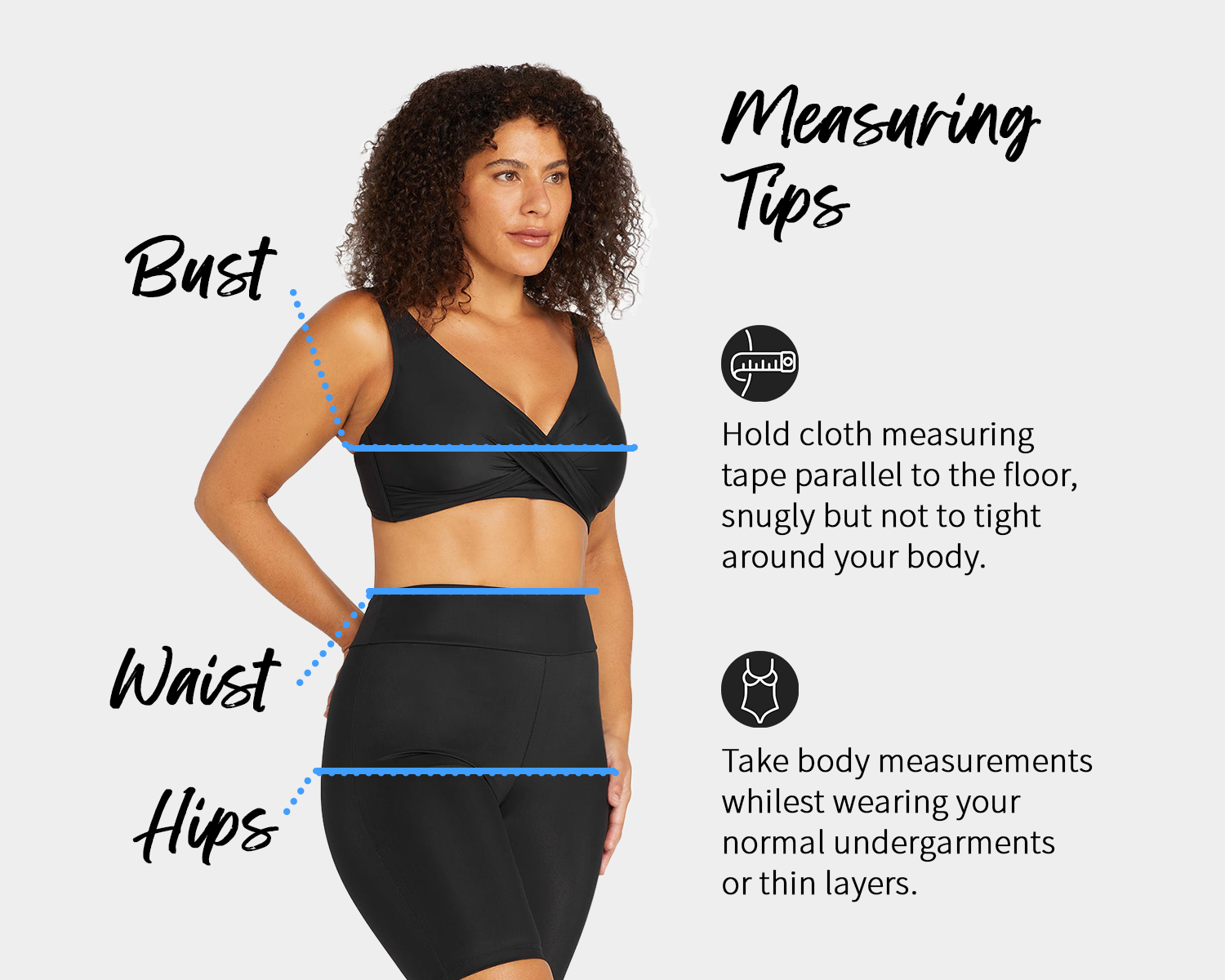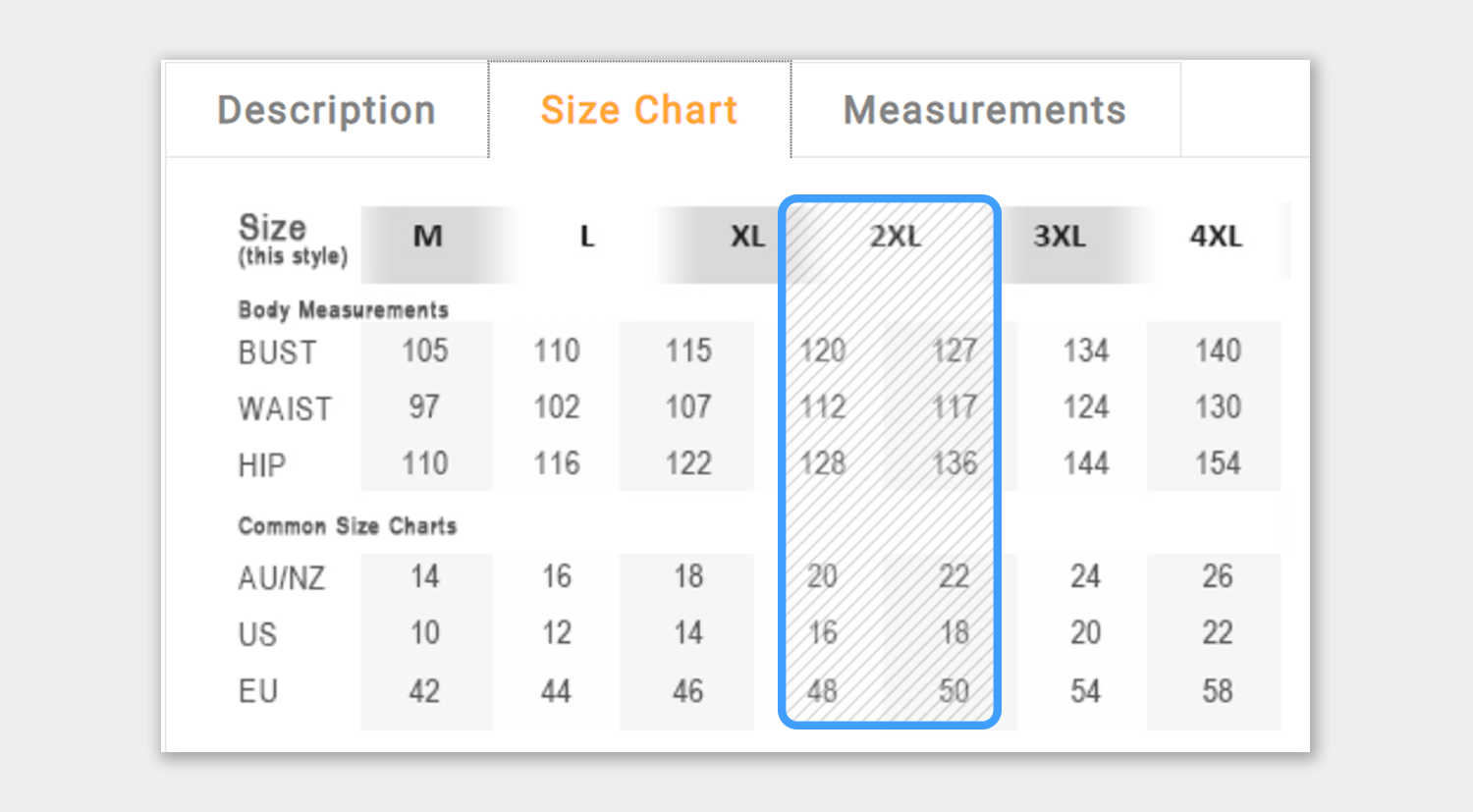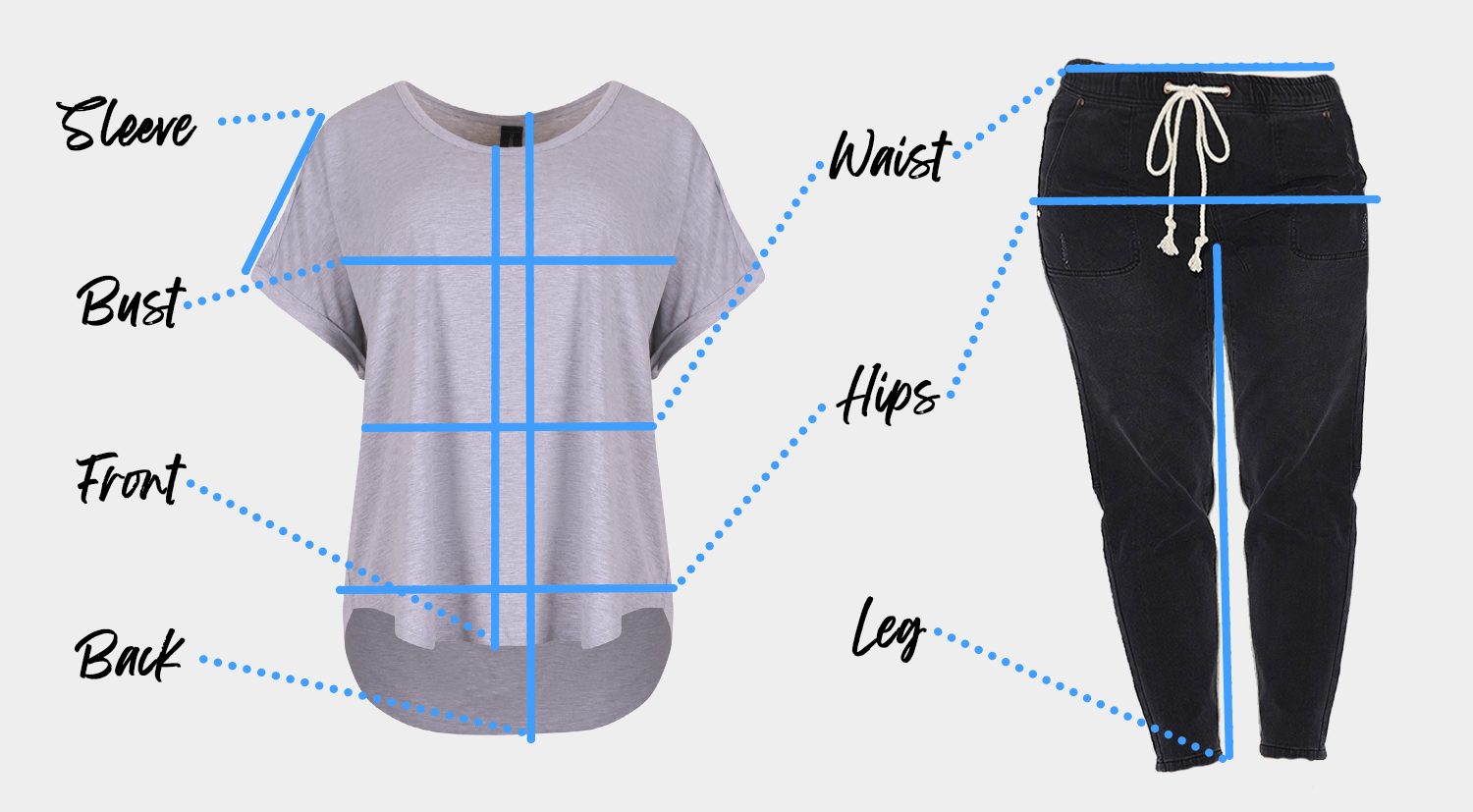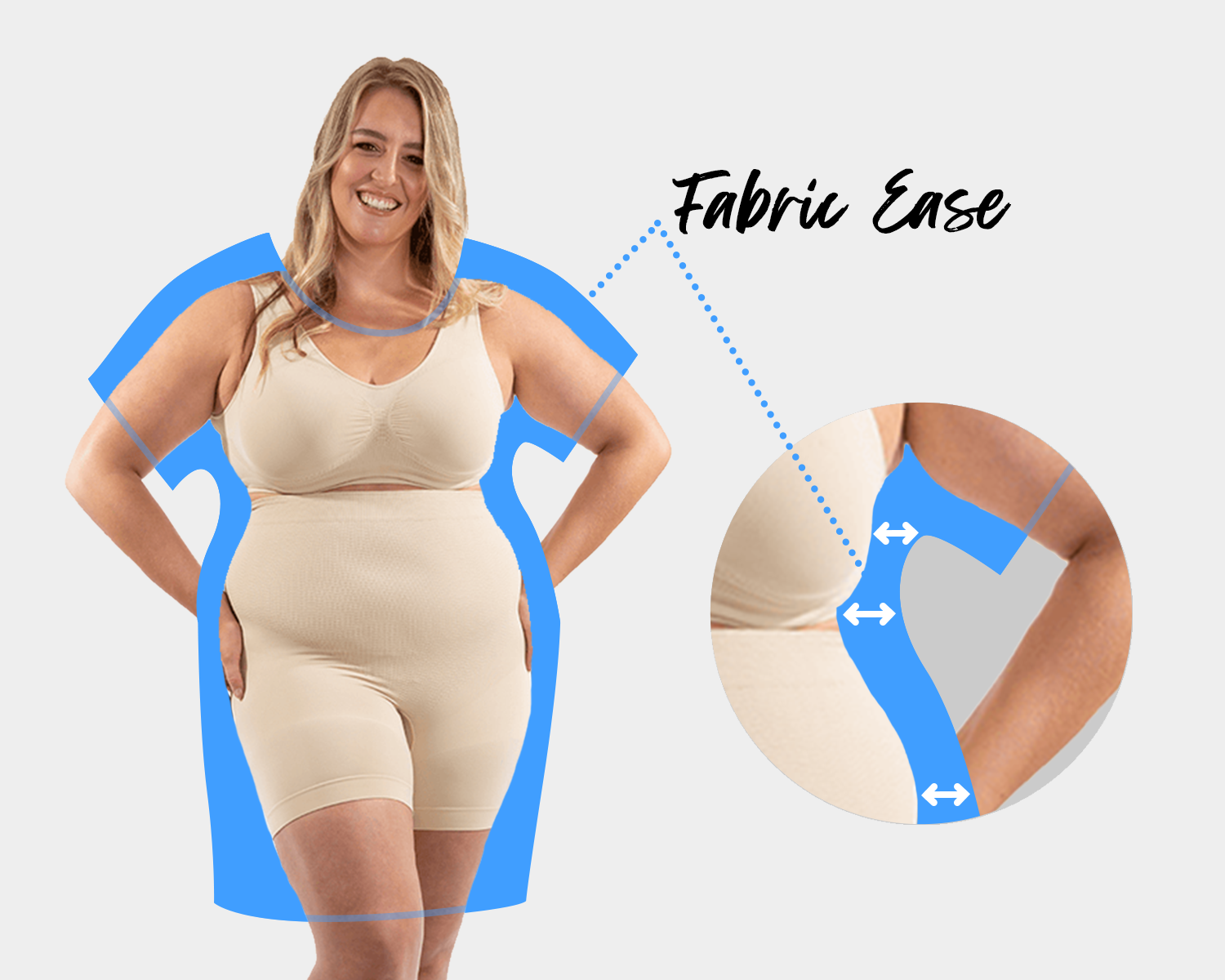Take your measurements using a cloth measuring tape while wearing your underwear or a slip only. Make sure the tape measure is parallel to the ground and moderately tight - it's easy to check this in the mirror while you measure.
This makes it easy to refer to your measurements helping you decide which garment size to select. This information is private and only visible when you are logged in!


Our main measurements that we take for each garment are the Bust, Waist and Hip measurement. From these we make custom size charts to fit each style.
The front, back, sleeve, leg and stretched waist lengths are provided for each style where required. They are intended as a guide only, as lengths are graded slightly for each size.




Our shaped and structured styles will normally have more shape around the shoulders and bust.




If you already have a garment that fits you well, you can simply use that to compare with our garment measurements.
If you have any questions, please contact any of our in-store team to discuss sizing.
Their experience with a multitude of labels, styles, and fabrics on all different body shapes is invaluable when it comes to selecting your size!